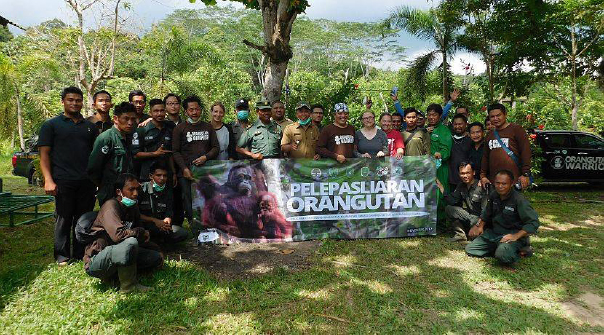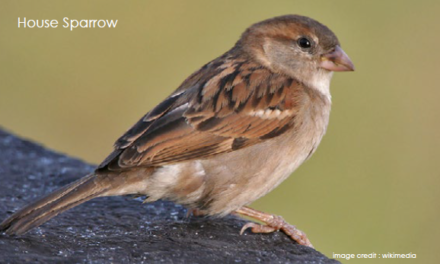
Orangutan Rehabilitation at Samboja Lestari Orangutan Project

Orangutan Rehabilitation at Samboja Lestari Orangutan Project
Earlier this month we received news that five orangutans were going to be released into the wild from the Samboja Lestari Orangutan Project in Borneo. The releases were found to be successful as the resident volunteer coordinator Kate was on scene to witness the whole release process. Kate has written about her experience on the release, so let’s see what happened!
The Build Up To The Release
Having worked alongside the Borneo Orangutan Survival Foundation (BosF) for the last 2 half years at Samboja Lestari where I have waved goodbye to many orangutans who have been released back into their natural habitat, I have finally had the chance to join one of these releases and accompany the 5 orangutans on their journey back into the wild.
The five orangutans to be released are all the ones that I am familiar with in some way or another and many volunteers from the past and present have met them either on the islands or in the enclosure areas. It is therefore very interesting to see how they will react to their new home!
The Loooong Journey Begins…
On the journey I felt very proud to be part of such a unique operation and kept on reminding myself that I wasn’t just on a road trip across Borneo, but on a journey that would change the lives of these 5 orangutans forever.
The convoy arrived early into the district of Wahau, and here the orangutans and humans were able to take a few hours of rest before the final leg of the trip. This area has a huge palm oil industry and a lot of the forest has been
destroyed, but we were heading to an area of the forest that is protected by BosF. We left at 6 A.M. and begun our 2 hour journey to the release site.
On the way the destruction of the other areas of land was evident but it was at least good to know that without BosF protecting their 86,000 hectares of forest it would have a similar fate as the rest of the now non-existent forest. BosF had to purchase the forest in order to secure it for many years to come. This forest is very beautifully remote and once you start driving through its hills, valleys and soaring trees you start to really understand why it’s so important to save it like BosF. It’s something you can talk about again and again but it doesn’t quite hit you until you are smack in middle of it all.
We soon reached the edge of the BosF forest land when we were met by a breath-takingly large river only crossable by boat. Here the orangutans had already been transferred over to the other side by the time we had arrived as we were in a trusted, but slower highlander car that encountered a sudden heavy rain that slowed us down.
Eventually we did cross the river and walked up the hill of the release site where the individual oranguatans were being placed at their release spots.
We were all wearing plastic football shoes for the mud and long blue socks for the leaches making us look like a misplaced football team in a rainforest. Needless to say this uniform although secure; still managed to allow leeches though.
It was finally time for the actual release: at 11 A.M. on the 5th of December. First to be released was the 7 year old Santa, as she had been rescued by BosF when I first started working at Samboja and was very wild and scared of humans. I found that she was actually rescued a couple of hours away from the release site but the forest she was born in is now long gone. After spending 2 years in the forest school she was finally ready to be
released.
When her cage was opened she ran out and immediately scaled up a large tree, climbing all the way to the top. Later that evening ,when the post release monitoring team arrived they informed us that she had travelled 500m from her release site and had also been foraging for food and had made a nest to sleep in. This was the best outcome we could have asked for and everyone was extremely happy.
The next in line for release was Tiny. He was released close to Santa’s release spot and they were later observed to be travelling together for more than 4 hours. He even nested close to her that night.
Ingrid and Ivan were then released. Since they had previously been on one of the islands that we volunteered to help refurbish, I got the pleasure of opening both their cages. The orangutans climbed up a tree and took in their surroundings; both looking shell shocked as they did so. The now quite large Ivan was hanging onto to his mother for comfort. However, after a few moments they realized they were safe and started to explore the area cautiously. We were later told that they also foraged for food before they nested in the trees.
Finally it was time for Yuni to be released. She had a keen interest in humans so we all stayed far back from her release. Even when she did decide to return to us; we all quickly evacuated the area and left her with the post monitoring team. Later she had been observed to be exploring and sleeping in the trees. She had not yet eaten anything when the team checked on her, but apparently this is common on the first day.
After the release we all headed to the monitoring camp which was a 30 minute walk from the release site. It is from here that the entire monitoring team go out every day to track the orangutans that have been released. The team wake ups very early, even before the orangutans, and seek them out in trees they left them in the night before. They then follow them all day until the orangutan nests and sleeps once again. This happens intensively for 3 months before the frequency of visits gradually decreases in 18 months.
The camp is on a beautiful large river and here we ate and relaxed for the rest of the day enjoying the peace of the forest.
The next morning after a good night’s sleep in the open forest, we set off early back to our vehicles to begin the long journey home. This entailed another river crossing and then a two hour drive to the base house. We later set off on the 12 hour journey back to Samboja over night and we arrived at 3.30 A.M. on Thursday morning.
The amount of time money and manpower to release and track orangutans back into the wild is marginally large and BosF are standing alone as the only NGO that manages to successfully achieve this goal. The amount of care and attention a single orangutan needs from entering the sanctuary upto release is huge and BosF have hundreds of animals currently under their care, making the job even harder.
source: thegreatprojects












